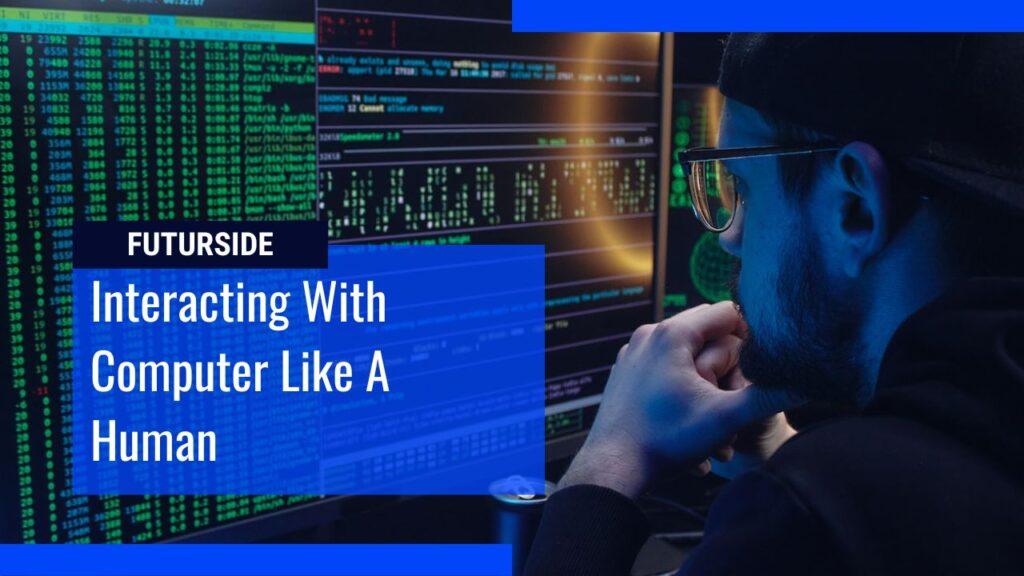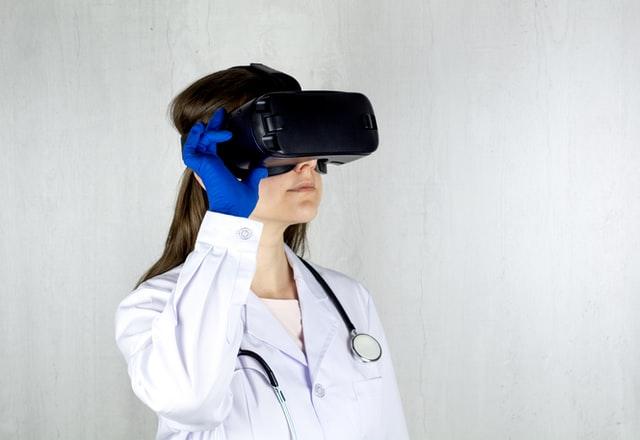Our relationship with technology is changing. Think about how much the world has changed, it is estimated that more than 80% of the world’s population has a mobile device. A study back in 2015 reveal that the first thing 80% of people do in the morning is interacting with their mobile phones. And it is also the last thing we do before going to sleep. We have more contact with mobile devices than anything or anyone else in our life. We are in a relationship with technology.
Throughout human history, our existence has been defined by new relationships with our tools. Million years ago we had the hunter-gatherer age, this is when new tools allowed us to extend our physiology and survive. Then we had the agricultural age, where new tools allowed us to move from survival to thriving and built communities.
After that, we had the industrial age which gave us the ability to completely change the way that we create and produce products. And the last several decades we see the Internet gave birth to the information age. This completely changed the way we communicate and process information.
Throughout history, in each of these ages, a new relationship with our tools completely changed our human experience. These new tools we created throughout history also changed us as well.
Now let’s return to our relationship with our mobile phones, these things are becoming our memory and it is blurring the line between us and our technology. It is becoming an extension of us and is gonna change the way that we interact with our technology. Hence what is human-computer interaction?

Contents
What is human-computer interaction?
Human-computer interaction or HCI is the study of how people interact with computers. It emerged in the late 1970s as the field of personal computing grew in popularity. As desktop computers became cheaper and more accessible to consumers, they needed to be intuitive enough to help even the most technically inexperienced people use them.
The field of HCI has since expanded to encompass games, learning, commerce, and health applications. Its practitioners also study aesthetics, audio design, and ergonomics. By understanding the needs of individuals, UX designers can develop better technology for the population. Furthermore, these systems can be used to make office operations more efficient.
HCI is a vast field with many applications. The study has grown and expanded in recent decades. Researchers have developed a growing body of knowledge regarding the field and ways to improve its use. Today, HCI projects aim to make creative tasks easier, more enjoyable, and more accessible. This type of interaction helps to design software that is easy to use with minimal experience.

While HCI is a broad field, it also incorporates many different disciplines, including the tech-centered fields of computer science, human factors engineering, and cognitive science. It also includes human behavior, such as social computing, which involves how people interact with technology. Research on the subject also includes sociology and psychology.
One example of a modern application of human-computer interaction is virtual reality. This technology immerses the user in an entirely different world with realistic perspectives and scenarios. This is a particularly useful technology in the educational and healthcare fields, as it accommodates different learning styles.
Other examples include voice search, whereby you can speak commands and perform various tasks. These can help increase productivity, which is the ultimate goal of any design. You don’t need to be an expert in the field to use this technology. And this is just a small portion of the research on human-computer interaction.
Impact of human-computer interaction
Human-computer interaction has many influences on people’s lives, from culture to the way people interact with technology. It may also change people’s beliefs and perceptions and may change how they interact with one another. One of its most obvious impacts is in the workplace. Workers spend less time on tasks that they once performed manually.
In the past, data collection and sorting were lengthy processes but now, workers can complete the task in a matter of seconds on their computer. Human-computer interaction systems are highly efficient at recording all types of functions for any branch. These systems also increased worker efficiency and productivity by reducing errors and enabling them to complete tasks faster with fewer resources.
The rapid development of computers has facilitated the transition from a manual to a computer-driven work environment. People can now work from home or even away from an office with just their mobile phone. And not to mention that in today’s world, work from home is becoming a trend. And we are heading toward a freelance economy. Many people are even able to use HCI to interact with customers and colleagues while they’re on the go.
It’s important to remember that HCI isn’t just about improving our daily lives, it’s also about changing the way we interact with our computers. HCI research draws on the theories of cognitive processes, cognitive psychology and other disciplines. These theories focus on the relationship between internal representations and the external environment. They also consider the social implications of human-computer interaction.
HCI research benefits from an increased understanding of the underlying mechanisms that govern usability. By applying human knowledge to the design process, researchers can increase the efficiency of the design process and maximize the effectiveness of the end product. In the coming years, HCI will need to continue to evolve.
Its focus is no longer contained on the desktop anymore but reaches far beyond into a complex networked world. In addition to these advances, new areas of study are emerging. Novel applications include computational biology, social science information visualization, open government, biodiversity, citizen science, and digital humanities.
But many researchers still have to work on new display designs, programming toolkits and predictive models of user performance. The importance of human-computer interaction has increased with the increasing popularity of computing and has been an integral part of application design. This field of study is based on a variety of theoretical models, including classical conceptions of cognition from cognitive psychology and cognitive science.

According to these models, cognition is a process within the human mind, involving the manipulation of internal states and symbols to produce results. In contrast, the traditional cognitive science model equates the human mind and the external environment. The study of HCI involves the design, planning, and use of interactive systems.
The basic premise of HCI is that we must design for people and that is what Interaction Design does. It is important to make interactive elements easily recognizable and to use appropriate labels and navigation mechanisms. Also, colors should be used to convey meaning, rather than as a means to convey information.
Human-computer interaction is crucial for the design of user interfaces, whether they are desktop computers or ATMs. Humans are better able to use them when they understand how they are meant to interact with them and a well-designed, usable system is a major asset for everything in this digital world. Even safety-critical systems require HCI for design.
The failure to design interfaces correctly can have devastating consequences. A well-designed interface can make a computer easier to use and improve productivity and efficiency. As computing devices have become more ubiquitous, they have become integrated into our everyday life.
HCI is important for the design of computers because it ensures their functionality and respect for human needs. This field of study has expanded over time to encompass new interaction techniques and the development of user-friendly computer systems. It can help make life easier for people who are less familiar with technology. So, the future of human-computer interaction is bright!
Future of human-machine interaction
We’ve seen amazing leaps in computing over the past decade. From 3D printers that print other 3D printers, to virtual reality applications that whisk you away to another world, to voice-controlled devices that give you weather and traffic updates, the possibilities for HCI are truly astounding. It’s time we all embraced HCI as part of our everyday lives.
While we’re all familiar with the computer mouse and keyboard, they’re not quite as natural as we’d like them to be. We haven’t developed the same level of precision in computer vision and speech recognition and our brains are not tuned up for this yet. In addition to speech and gesture recognition, smartphones now boast powerful cameras and respectable CPU power.
In addition to these features, smartphones typically contain Bluetooth radios and some kind of position information, ranging from a coarse cell tower to a highly precise assisted satellite GPS. Human-computer interaction is a vital factor in building accessible, usable and efficient systems.
It is built with user-centered concepts to make the experience of using computer systems more enjoyable and efficient for everyone. Today, smartphones and tablets pack more computing power than NASA had in 1969. This has paved the way for a whole new world of HCI.
It is and will continue to change our lives in a variety of ways. In the past few decades, we have witnessed the emergence of ubiquitous computing, the Internet of Things, Artificial intelligence and cyber-physical systems. These technologies have become integral to many everyday tasks and fundamentally change HCI.
In the near future, VR headsets could replace TVs and laptops. People can have digital twins performing tasks for them. People could interact with virtual objects by waving their hands or pinching thin air. These technologies are already starting to revolutionize the way we communicate with our computers. Those are only a few of the many developments that are currently underway.
The development of new technologies will also involve the development of new tools to facilitate HCI. The interface of the future will support multiple input and output modalities, multiple screen sizes and an intelligent component that adapts to the user’s needs. In the future or if not the case right now, people will become inseparable from their devices.

0 Comments